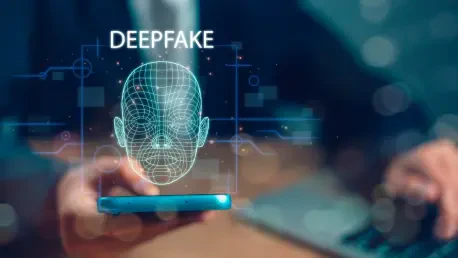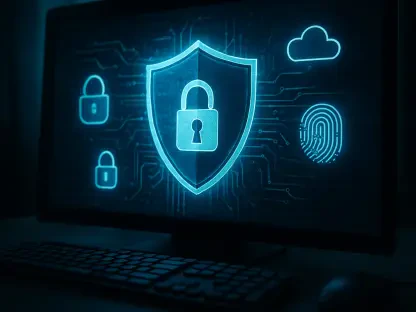The rapid advancement of digital technologies has revolutionized the way individuals connect, communicate, and conduct business, turning the world into a tightly knit global community. Yet, amidst these transformations, unprecedented trust challenges have emerged, fueled by the proliferation of deepfake scams and complex digital impersonations. Deepfakes, a technology that leverages artificial intelligence to construct convincing facsimiles of individuals, have infiltrated diverse sectors, from personal interactions to professional engagements. Their use in scams has heightened skepticism and necessitated the adoption of meticulous verification techniques to protect against deceit. As society embraces remote work and networking mediums, the thin line separating genuine interactions from deceptive practices continues to blur, underscoring an era of distrust that compels both individuals and organizations to continuously adapt to mitigate risks in everyday dealings.
The Predominance of Deepfake Scams in Professional Spaces
Deepfake technology’s sophistication presents an alarming threat as scammers increasingly exploit it for fraudulent activities, notably within professional settings. Platforms traditionally viewed as secure, like LinkedIn, have become targets where malicious actors create polished, fake profiles, leading to confusion between authentic and deceptive interactions. The ubiquity of video conferencing, in particular, amplifies the reach of scammers who move beyond email fraud to conduct impersonations in real-time, making detection arduous. This concern is evident in the significant rise in job-related scam reports, which have sharply escalated since 2025, with financial losses reportedly ballooning to $500 million. Such developments underscore the transformed landscape, urging professionals to adopt comprehensive verification practices that include scrutinizing profiles for inconsistencies and employing intuitive judgment. As fraudulent schemes become increasingly intricate, the necessity for robust vigilance grows, highlighting the shift from skepticism to proactive defense mechanisms against deception in professional engagements.
Individuals encountering scam threats have adjusted their behavioral protocols to combat these sophisticated ploys effectively. For instance, people who experienced employment scams now utilize rigorous verification methods, including personal data aggregators and linguistic testing, ensuring credible professional exchanges. Additionally, they prefer video calls with active webcams to confirm identities, spotlighting how cleverly orchestrated scams often mimic legitimate interactions. The realism these scams assume fosters a heightened sense of unease in professional spaces, thus mandating keener scrutiny. The adaptation to these challenges is not merely quick fixes but has become imperative in navigating deceits, facilitating trust restoration, and averting potential harm. As technological manipulation becomes increasingly prevalent, embedding thorough authentication routines into routine communication underscores a necessary balance between maintaining genuine engagements and countering deepfake threats.
Response Strategies and Technological Interventions
In tackling the burgeoning risk posed by digital impersonation, novel strategies and technological interventions have emerged. Startups dedicated to detecting deepfake technology have risen in response, launching services aimed at identifying AI-driven fakes successfully. Established technology enterprises are devising comprehensive identity-verification systems employing biometric data and blockchain solutions, advancing authenticity verification. Despite these technical advancements, foundational social engineering techniques and intuition remain central to shielding against deception, suggesting a dual approach combining technology with traditional wisdom. Notable industry figures involved in AI development emphasize the significance of multidimensional verification, advocating for low-tech strategies reminiscent of pre-digital methods, which are essential in unveiling malicious intentions. These include requesting live demonstrations of local knowledge from job candidates or conducting camera verifications in real-time, showcasing organic ways to confront deepfake threats while maintaining efficiency and trust.
The juxtaposition between intricate technological solutions and simple verification tactics draws attention to the evolving communication etiquette. While intensified scrutiny may disrupt fluid interactions, it simultaneously weeds out insidious impersonations, serving as an indispensable tool in safeguarding genuine exchanges. Professionals encountering or mitigating deepfake scams deploy these low-tech but effective approaches, reinforcing security where technology falls short. Though these strategies may inadvertently hinder genuine interactions, they remain necessary amid growing digital mistrust, underscoring the broader societal commitment to protect identity integrity. The balanced amalgam of high-tech detection and intuitive measures illuminates how traditional wisdom continues to hold value against contemporary digital threats, promoting a secure communication environment that prioritizes authenticity over speed, thereby restoring confidence within the dynamic technological landscape.
Navigating Mistrust in Research and Data Verification
As digital skepticism permeates various domains, its impact on data reliability and research integrity becomes increasingly evident, compelling researchers to navigate complex verification protocols. Professionals tasked with ensuring participant authenticity in virtual surveys have adopted stringent inquiry methods to maintain credible outputs. This evolution in approach involves examining response timings and demographic accuracy, showcasing the need for exhaustive authentication strategies in safeguarding vital data and research conclusions. Altered recruitment pathways emphasizing personal networks further illustrate the necessity of leveraging tangible connections over often unpredictable digital channels. Through these measures, researchers strive to mitigate potential fraud and avoid data contamination, underscoring an adaptable methodology capable of confronting modern digital impersonation challenges.
The intersection between enhanced security and productivity manifests as participants balance intricate verification processes with the efficiency of seamless workflows. Endorsing meticulous scrutiny to validate identities inadvertently hampers time management, yet it enforces a barrier of truth essential within academic and professional settings. Such meticulous interactions arise from recognizing small discrepancies that signal deceit, including dubious offers or incongruous benefits, foreshadowing the advanced veils criminals wear within the digital landscape. This underscores the nuanced dynamics those engaging with digital interfaces must navigate, revealing a detailed interplay between maintaining security and embracing productivity. While small details increasingly indicate fraudulent intentions, this growing vigilance enhances collective efforts to safeguard identity integrity amidst complex environments rooted in digital advancements and deception.
Restoring Trust and Ensuring Authenticity Amid Digital Complexities
The sophistication of deepfake technology poses a significant threat, as scammers are increasingly using it for fraudulent activities, especially in professional environments. Even platforms once considered secure, like LinkedIn, are now targeted by malicious actors who create convincing fake profiles. This development blurs the line between real and fake interactions. With the rise of video conferencing, scammers have expanded beyond email fraud to real-time impersonations, making it more difficult to detect these deceptions. This issue is reflected in the surge of job-related scam reports, which have drastically increased since 2025, with financial losses soaring to $500 million. This shifting landscape highlights the urgent need for professionals to adopt thorough verification practices, such as examining profiles for inconsistencies and using sound judgment. As scams become more intricate, the necessity for vigilant defenses becomes crucial, urging a proactive approach to prevent deception in professional settings. Thorough authentication processes are now essential in maintaining trust and combating deepfake dangers.









